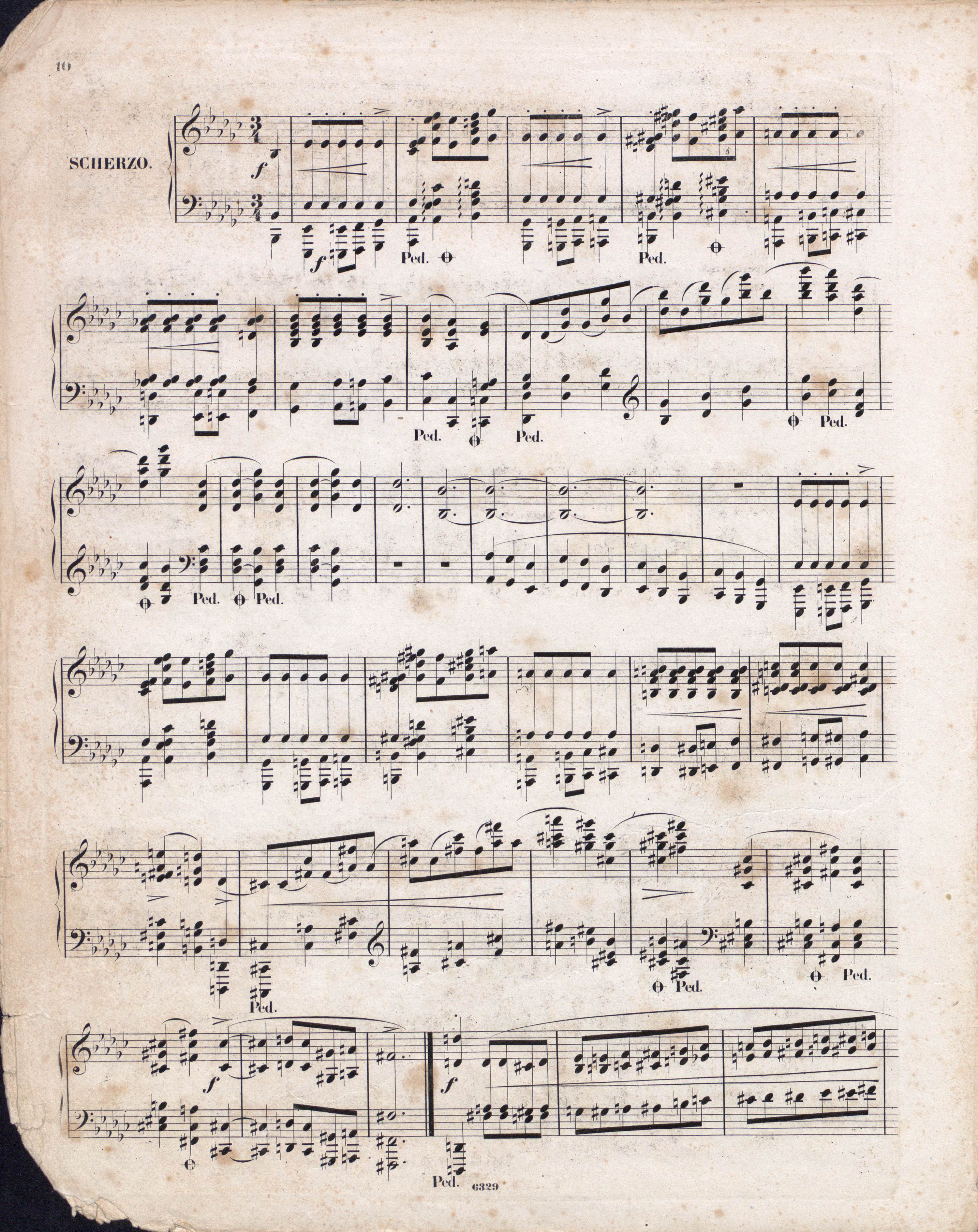



The problem of the difference of crescendo indications between the sources based on [A] – GC and FE – concerns five out of six analogous places (a double bar line means the end of a line in GC or FE respectively):
| bars | GC (→GE) | FE (→EE) |
|---|---|---|
|
5-7, 193-195 |
 |
 |
| 25-27 |
 |
 |
| 213-215 |
 |
|
| 69-71 |
 |
 |
| 257-259 |
 |
There are two basic possibilities explaining this state of affairs:
-
Notwithstanding single, minor inaccuracies, both sources convey the notation of [A] without any distortion. It implies either Chopin's corrections – already after having prepared GC – in a few places of the autograph, or addition of this hairpin within the scope of the last retouching of both manuscripts. Each of these scenarios seems to be unconvincing or does not bring us closer to a possible decipherment of the composer's intention:
-
due to the graphical layout of the text (the
 signs intersect the stems of the octaves or of the chords divided between the staves), possible corrections presented a real threat that the places would become illegible, while the entire page would require to be rewritten. Therefore, it is hard to assume that Chopin would have taken such a substantial risk to change the notation, which could also mean a cumulative crescendo;
signs intersect the stems of the octaves or of the chords divided between the staves), possible corrections presented a real threat that the places would become illegible, while the entire page would require to be rewritten. Therefore, it is hard to assume that Chopin would have taken such a substantial risk to change the notation, which could also mean a cumulative crescendo; - a possible completion of two already written Stichvorlage manuscripts by Chopin raises subsequent doubts – if he corrected it simultaneously, why did he write different versions and if he did it independently, how to state which of the versions is later?
-
However, independently from the above reservations, considering the version of FE to be generally compatible with [A] leads to discrepancies in bars 26-27 and 214-215. Due to the abbreviated notation of the reprise, both places are corresponded in [A] with the same pair of bars (bars 26-27), hence they cannot be compliant with the notation of the autograph at the same time. The editors of mUltimate are unaware of the cases of changing one not too long
 sign to two shorter ones (except for situations forced by the transition into a new line). In turn, in the Waltz in E
sign to two shorter ones (except for situations forced by the transition into a new line). In turn, in the Waltz in E major, Op. 18, bars 5-7 and analog., three subsequent
major, Op. 18, bars 5-7 and analog., three subsequent  signs, written in the autograph and in the first French edition, were replaced with one longer one, which shows that this kind of revisions were sometimes used by editors of Chopin's pieces. Thereby, we can assume that in bars 26-27 [A] had two
signs, written in the autograph and in the first French edition, were replaced with one longer one, which shows that this kind of revisions were sometimes used by editors of Chopin's pieces. Thereby, we can assume that in bars 26-27 [A] had two  signs, which the engraver of FE changed for the 1st time and reproduced correctly in bars 214-215. However, since he changed bars 26-27, he could have changed all the remaining ones too, which leads us to a consideration of a second main possibility explaining the differences between GC and FE.
signs, which the engraver of FE changed for the 1st time and reproduced correctly in bars 214-215. However, since he changed bars 26-27, he could have changed all the remaining ones too, which leads us to a consideration of a second main possibility explaining the differences between GC and FE.
-
due to the graphical layout of the text (the
-
One of the sources, GC or FE, conveys a systematically distorted image of [A]. It follows from the analysis performed above that the source was most probably FE. The arguments presented below support this thesis:
-
graphical consistency of two-bar
 signs, related to the division of the text of FE into lines – they appear always when the adjacent bars are written in one line of the text (the only exception are bars 214-215, discussed above, in which the engraver – probably unintentionally – revealed to us the factual image of the base text);
signs, related to the division of the text of FE into lines – they appear always when the adjacent bars are written in one line of the text (the only exception are bars 214-215, discussed above, in which the engraver – probably unintentionally – revealed to us the factual image of the base text); - no clear musical consistency – two-bar signs are not related to a place in the phrase, as, in general, they appear in the first two bars of these sections, but once in the second and third (bars 26-27).
-
graphical consistency of two-bar
Eventually, in the main text we give the consistent one-bar hairpin of GC (→GE). Cf. Prelude in C minor, Op. 45, bars 6-7.
minor, Op. 45, bars 6-7.
Compare the passage in the sources »
category imprint: Interpretations within context; Differences between sources
issues: FE revisions, Hairpins denoting continuation
notation: Articulation, Accents, Hairpins



